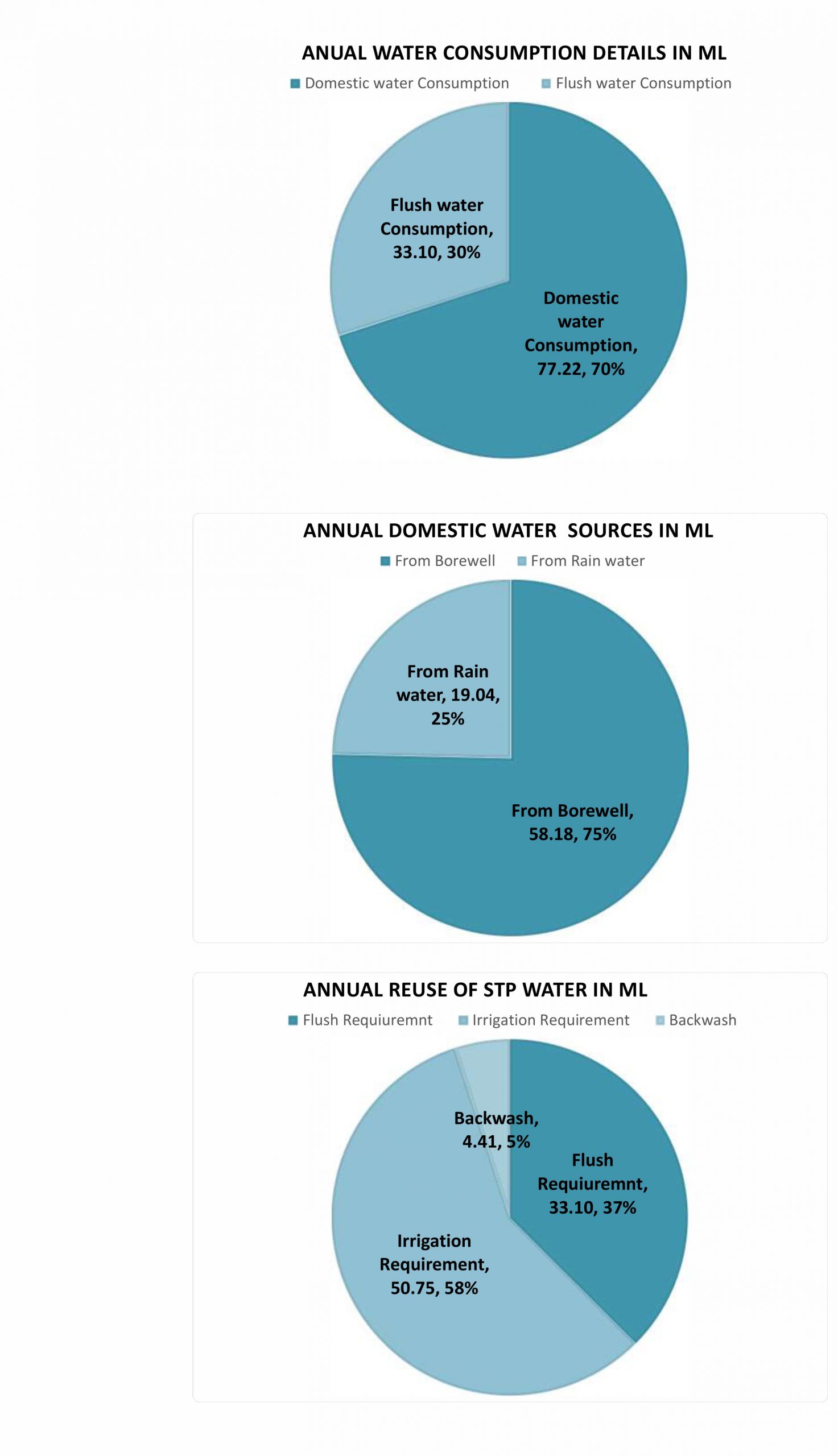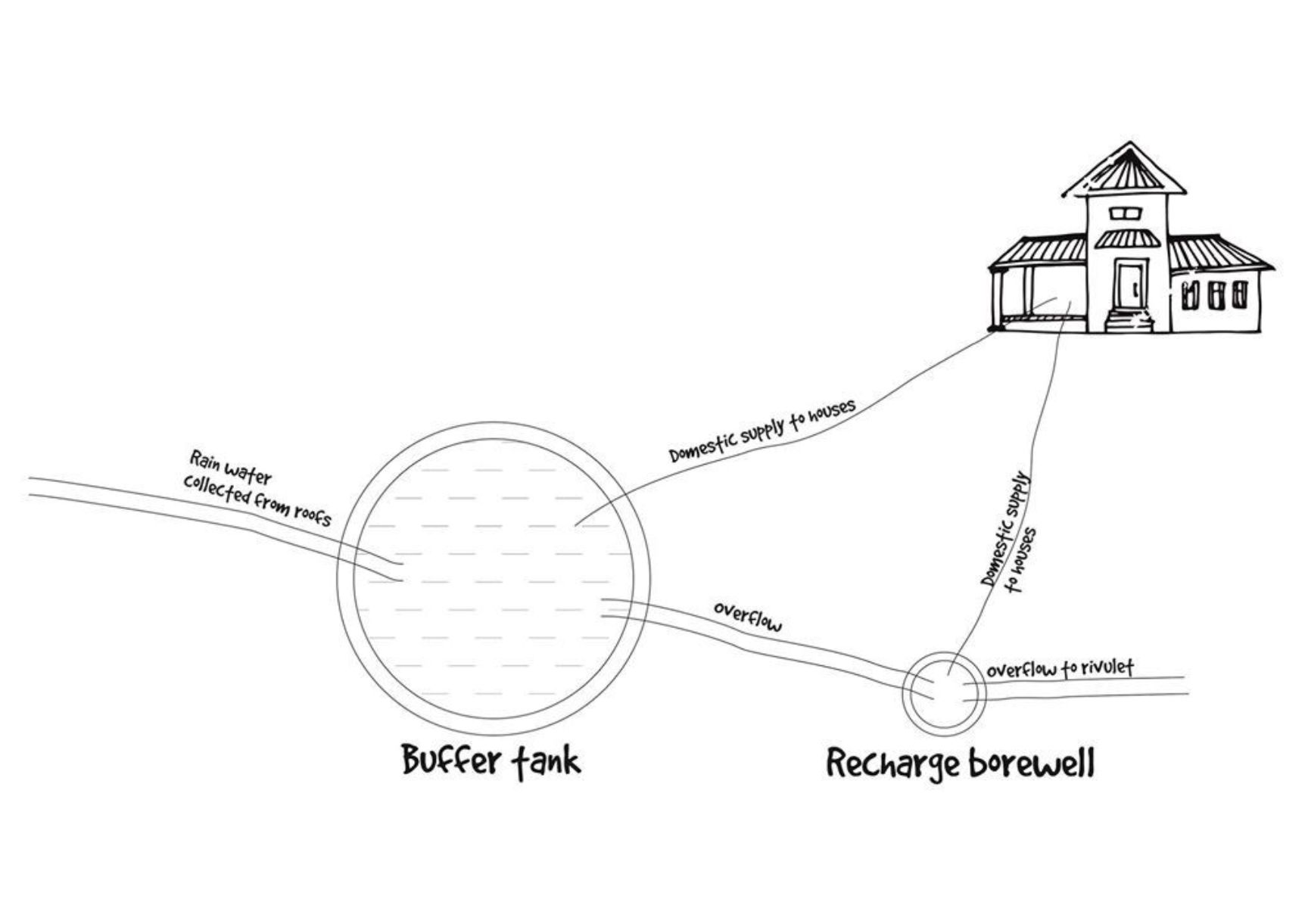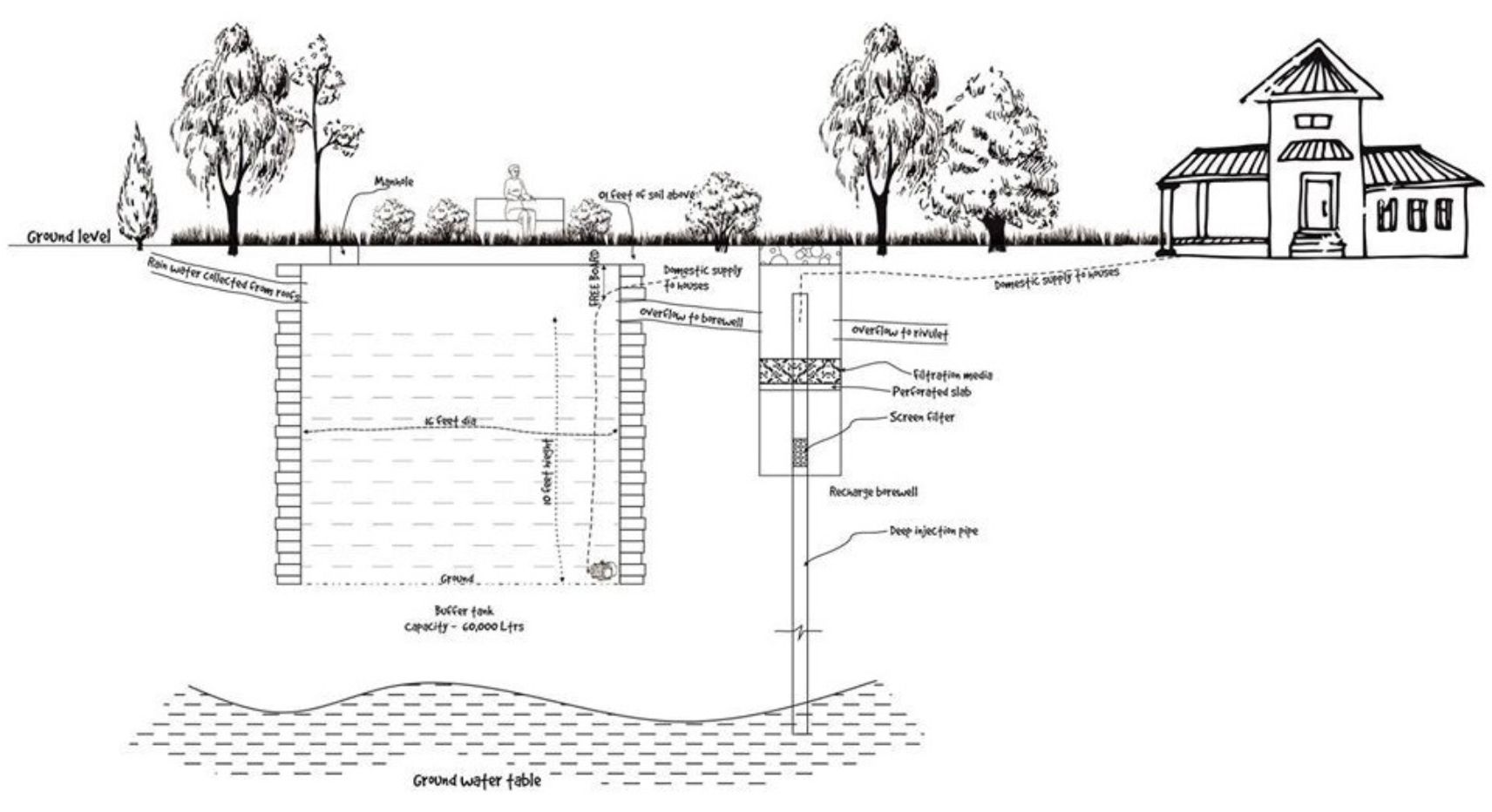Water and Sewerage

SERVICES
Site services were integrated into overall site planning, both for efficiency and to maximise space for planting. Most tank structures were built under planned hardscaped surfaces like car parks and roads. The service network comprising sump tank, rain water tank, sewage treatment tanks, collection tanks and flushing tanks was planned for ease of access for maintenance.
The services for individual homes are routed through underground ducts strategically located in the front and rear of the plots, allowing sufficient space for vegetation and ease of maintenance. Addition of future services is also easier.
Diesel generators have been provided for individual units and common spaces, and we hope they will eventually be phased out by the community in favour of solar energy.
Sprinkler systems for irrigation that use recycled wastewater have been installed in most places.
Water and energy management systems have been designed within the parameters of cost, environment and maintenance, and are an important aspect of the design of the community.
WATER EFFICIENCY
The main sources of water used for supply are bore-wells and rainwater.
Malhar sources its water from bore-wells located on site. The bore-well water is hard and needs treatment. Treatment plants are situated in basements and setback areas. The water is treated through a filtering and softening process and pumped into the homes through a hydro-pneumatic pressure pump.
The rainwater is collected from all roofs through a system of gutters and pipes, and fed by gravity into a rainwater tank. It is filtered and pumped to the homes through the same system. The size of tanks has been optimised keeping in mind the annual rainfall pattern of Bangalore. The usage of water from the rains reduces dependency on sources like municipal water and bore wells.
Water efficient low-flow plumbing and sanitary fixtures are used to minimise waste.
A comprehensive approach towards water use, recharge, reuse and harvesting has been used across the site. Large unpaved open spaces, run-off percolation pits, buffer tanks, landscaping with indigenous species, grey water recycling and low-flow fixtures have collectively enabled the community to successfully stay off-the- grid throughout the year.



RAIN WATER HARVESTING
Ideally, rainwater which is incident on a site should either be captured for reuse or allowed to percolate through the earth to recharge the water table. Due to the site’s undulating sloping terrain with hard soil, the percentage of percolation is minimal; a majority of rainwater is wasted as surface run-off to the naala.
Percolation
To increase the percolation, site planning emphasises the inclusion of large unpaved spaces housing native plant species. This helps in direct percolation as it loosens the soil and enables further filtration. Run-off percolation pits created to capture surface run-off water aid the process.
Rainwater harvesting
One of the unique rainwater systems implemented in the project tackles two major goals concurrently:
– maximizing the capture of roof rainwater, and
– groundwater augmentation through artificial recharge.
All the pipes that capture rainwater from roofs to assimilate into small circular water tanks called ‘buffer’ tanks distributed around the community. These buffer tanks have earth as the base and are interlinked with recharge borewells.
One of the unique rainwater systems implemented in the project tackles two major goals concurrently:
– maximizing the capture of roof rainwater, and
– groundwater augmentation through artificial recharge.
All the pipes that capture rainwater from roofs are channelled to assimilate into small circular water tanks called ‘buffer’ tanks distributed around the community. These buffer tanks have an earthen base, allowing the water to percolate and infiltrate into the soil and thereby increasing the subsurface holding capacity. When the soil-capacity is saturated and water percolation is halted, the water collected in the tank overflows to recharge a deep borewell located in close proximity. In this way, the technique ensures that a very minimal amount of rainwater is wasted.
Designing smaller tanks enabled us to be economical yet effective in the storage of water – smaller pipes can be used for the network and the quantity of water can also be managed more efficiently. The water captured in this way requires minimal filtration before being dispensed to the community for domestic usage.
This method has enabled the residents to utilize rainwater for their domestic usage for more than a hundred days in a year on an average. Even the yield of the borewells is a generous 3.5 – 4 inch (compared to the conventional yield of 1– 1.5 inch). Additionally, the recycled water obtained from wastewater treatment is used for irrigation instead of rainwater or borewell water. The hardy, native species planted absorb excess nutrients, further amplifying filtration and augmenting the buffers.



SEWAGE TREATMENT
Domestic sewage is collected through a network of PVC pipes and fed into a treatment plant located under roads and basements. The wastewater stream is conveyed to a DEWATS (Decentralized wastewater treatment System) unit.
The fundamental criterion for choosing the DEWATS is that it is an environment friendly and low maintenance wastewater treatment option for treating domestic black and grey water. The system is not dependent on electricity for its treatment and its installation cost is comparable to conventional STP. The treated effluent conforms to the KPSCB norms and can be utilized for secondary use like toilet flushing and irrigation of the landscape.
WATER RECYCLING
The water emerging from the sewage treatment plant undergoes further treatment through an aeration tank and a series of carbon and sand filters. This water is pumped back to the homes through a dual plumbing system, and used in toilet flushes.
Excess water is used in the landscape for irrigation. The irrigation is managed through a system of drip lines and a series of sprinklers.
